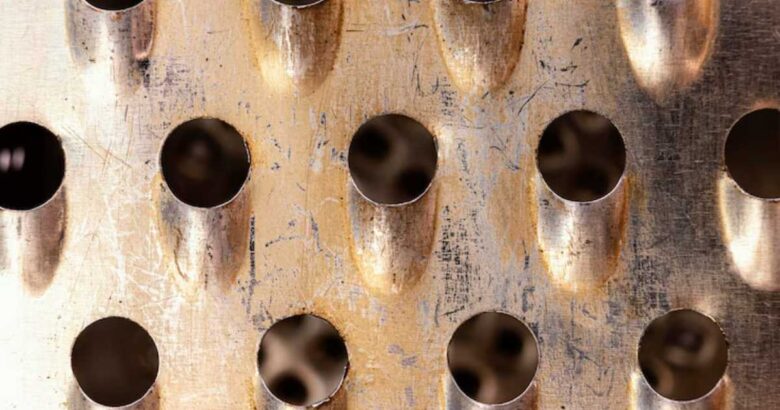Does Brass Tarnish? Discover Everything You Need to Know
Understanding Brass Tarnishing and How to Prevent It

Article summary
From jewelry to house décor, brass is a common metal with many uses. One often asked question, nonetheless, is: does brass tarnish? The reasons brass tarnishes, the elements causing tarnishing, and ways to either avoid or clean tarnished brass will be discussed in this article. This page will address all your queries regarding brass tarnishing regardless of your interests in jewelry, house ownership, or just curiosity. We have you covered from knowledge of the science underlying it to useful advice on brass maintenance!
Introduction: Does Brass Tarnish?
Mostly composed of copper and zinc, brass is an alloy with a unique gold-like look that finds favor in many different kinds of products. But many people find over time that brass objects can lose their gloss and acquire a drab or black appearance. We call this tarnishment.
Tarnishing is the result of brass surface reacting chemically with environmental factors that results in discolouration. Although this is a normal process, with proper care one can slow down or undo it. We will address the burning issue in this article: does brass tarnish? We will discuss its causes, ways to avoid it, and techniques for cleaning tarnished brass to bring back its brilliance.
What is Brass?
Though additional metals like lead or tin may be added in minute amounts to improve specific qualities, brass is an alloy mostly made of copper and zinc. Its strength, corrosion resistance, and pleasing yellow-gold look have made it sought after for thousands of years. Making musical instruments, gear, jewelry, faucets, and even coins from brass is rather common.
Brass’s beauty is in its capacity to reflect and shine light; nevertheless, over time this shine is prone to tarnishing.
Does Brass Tarnish?
Brace does discolor over time. A chemical interaction between the surface of the metal and elements like oxygen, sulfur, and atmospheric moisture produces tarnishing. This reaction causes the metal to lose its shiny look, and on its surface a dull or black covering could develop.
Usually a layer of copper oxide, the tarnish that develops on brass results from the copper component of brass reacting with oxygen in the atmosphere. The tarnish might develop thicker with time and rob the metal of its gloss. Not to worry though; tarnish does not indicate that the brass is irreversibly harmed! It just has to be cleaned.
Why does brass tarnish look?
Brass is reactive, hence the process of tarnishing it proceeds differently. Particularly copper, brass is delicate to environmental elements including moisture, oxygen, and chemicals. Some typical elements that help to tarnish are:
- Brass darkens the surface by means of oxidation brought about by oxygen exposure in the air. For metals including copper, this is their natural process.
- Humidity: Too much moisture can hasten tarnishing of metals. Humid environments let moisture to settle on the brass, which causes oxidation.
- Products including acid, such cleaning supplies, skin oils, or even naturally occurring oils in meals can hasten tarnishing.
- Pollution: Brass can be tarnished by airborne contaminants such sulfur compounds present in smog reacting with metal. In urban or industrial settings, this is rather typical.
- Extreme temperature fluctuations subject brass to more likely fast tarnishing damage.
How Can Brass Not Tarnish?
Although tarnishing is unavoidable with time, there are a few techniques to slow down the process and prolong the shining of your brass:
1. Frequent Polishing and Cleaning
Frequent polishing and washing help to prevent brass from tarnishing rather effectively. Brass surfaces free of oils, dust, and filth help to lower the likelihood of tarnish development. Maintaining its gloss, use a soft cloth and a brass-specific cleanser.
2. Shielding Coating
Brass objects can be covered in a clear lacquer or protective coating to separate the metal from environmental elements. This greatly lowers the likelihood of damage. Remember, though, that if you employ this approach the coating might need to be reapplied over time.
3. Keep brass dry
Moisture speeds up tarnishing; so, brass must remain dry. Store brass objects in a dry place; try not to expose them to damp areas like kitchens or bathrooms. If you have brass jewelry, think about including anti-tarnish cloth or silica gel packet in the storage box.
4. Run brass polishing wipes
Using brass polishing wipes is a great way to keep your brass brilliant without too much work. These mild abrasives and cleaning ingredients in these wipes will help your brass look shiny and aid to avoid tarnish.
5. Steer Clear of Acidic Contact
Brasses tarnish more quickly in an acidic environment. Steer clear of foods acids, potent cleaning agents, or skin oils. Remove your brass jewelry before using lotions, fragrances, or other skin treatments.
6. Store brass correctly
Store brass objects that aren’t used often in a sealed bag or box to guard them from the elements. You may stop tarnish from developing by lowering air pollution level.
How to polish brass?
Brass may tarnish over time even with the finest preventive measures. Fortunately, a few basic techniques will help tarnished brass to be cleaned and restored to its natural brilliance:
1. Salt Method with Vinegar
Using a vinegar and salt mixture is among the most natural and efficient methods to polish tarnished brass. Here is the process:
- To make a paste, toss one tablespoon of salt with one cup of white vinegar.
- Using a soft cloth or sponge, dab the paste onto the tarnished brass.
- Rub the tarnish gently, in circles.
- Rinse with warm water then completely dry.
2. Lemon plus baking soda
On tarnished brass, lemon juice and baking soda also do miracles. To a tarnished spot, just dab on a paste of baking soda and lemon juice. After a few minutes, gently scrape it off with a toothbrush or cloth. Rinse under warm water; dry.
3. Corporate Brass Cleaners
You could buy a commercial brass cleaner if you want a quicker, ready-made fix. These products are designed especially to eliminate tarnish without corroding the metal. For optimum results, just follow manufacturer’s directions.
4. Brace Polishing Cloth
Made especially for brass, polishing cloths help to retain its gloss and eliminate little tarnish. Polishing chemicals that clean and guard the metal abound on these cloths.
Benefits and Drawbacks of Brass
Brass does have certain drawbacks even if it is a strong and beautiful material. The advantages and disadvantages are briefly shown here:
- One advantage is pleasing look with a gold-like gloss.
- corrosion-resistant when given appropriate maintenance
- long-lasting and robust
- Simple enough for manufacturing operations.
- Cons: likely to tarnish if improperly cared for
- needs consistent polishing and cleaning.
- Affected by pollution and humidity is also
Conclusion: Does Brass Tarnish?
Ultimately, environmental elements including air, humidity, and acid exposure do cause brass to tarnish over time. Although tarnishing is a normal process, you have not to live with it. You may slow down the tarnishing process and prolong the appearance of sparkling, newness by acting to preserve your brass. Understanding how tarnishing occurs and how to care for brass will make all the difference in maintaining its beauty whether you are cleaning brass jewelry, home décor, or musical equipment.
Frequently Asked Questions (FAQs)
Brasses tarnish over what length of time?
Particularly in humid or dirty surroundings, brass can start to tarnish in as little as a few weeks. Still, the process is slow and can take months or years to show up.
Is tarnished brass recoverable?
Indeed, tarnished brass can be recovered by means of vinegar and salt, lemon and baking soda, or a commercial brass cleaner. Additionally able to prevent tarnishing initially is regular maintenance.
How can brass not tarnish?
Store brass in a safe case, keep it dry, maintain it free from tarnishing by using a clear lacquer finish. Its gloss can also be preserved by regular washing and avoidance of acidic materials.
How might brass be polished most effectively?
Using a soft cloth designed for brass will help you to polish brass most effectively. For minor tarnish, vinegar and salt or a polishing cloth work nicely.
Should brass be used in highly humid environments?
In humid surroundings, brass often tarnishes. Store brass objects dry to reduce tarnish and steer clear of too humid conditions.
Does tarnishing compromise brass items’ value?
Although it lessens their appearance, tarnishing brass objects usually has no effect on their structural integrity. On precious antiques or collectibles, however, tarnishing could lower their market worth.
Citation
Smith, John. “Brass Tarnishing: Causes and Prevention.” 2023: The Metal Maintenance Journal
Disclaimer
This page serves only for informative needs. It is meant not to offer expert guidance. When handling valuable or antique brass objects, always speak with a specialist.

